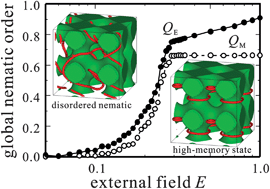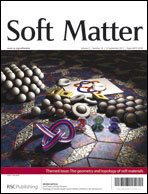Defect science and engineering of liquid crystals under geometrical frustration
Abstract
Spontaneous symmetry breaking while preserving flow ability is a remarkable feature of nematic liquid crystals. When a nematic liquid crystal coexists with a solid, the surface field of the solid tends to anchor the director direction on the surface: anchoring effects. If geometrical frustration between nematic ordering and anchoring is strong enough, stable topological defects are formed. Defects in an ordered state are usually regarded as undesirable features. However, recent studies reveal that defects stabilized by a topological constraint from the solid surfaces are actually quite useful and open up novel possibilities for defect engineering of liquid crystals: self-organization of soft matter by defects, memory effects of topological origin, and control of flow of nematic liquid crystals and colloid motion by defects. For example, defect reconfiguration accompanying the change in the topology costs a very high energy far beyond the thermal energy, which overwhelms a typical energy scale in soft matter. This provides extreme stability for structures assembled by defects and information memorized in defect topology. Furthermore, effects of topological defects can easily be removed perfectly by a nematic-to-isotropic transition, which provides switchable functions. Defects also affect the motion of colloids immersed in a liquid crystal and flow behaviour of a liquid crystal. Here we review recent developments in science and engineering of topological defects in nematic liquid crystals, mainly based on our numerical simulation studies.

- This article is part of the themed collection: The geometry and topology of soft materials

 Please wait while we load your content...
Please wait while we load your content...